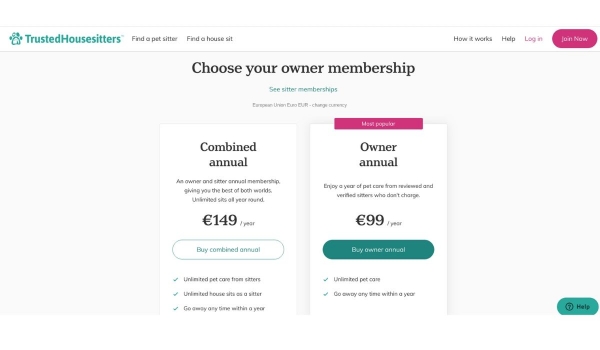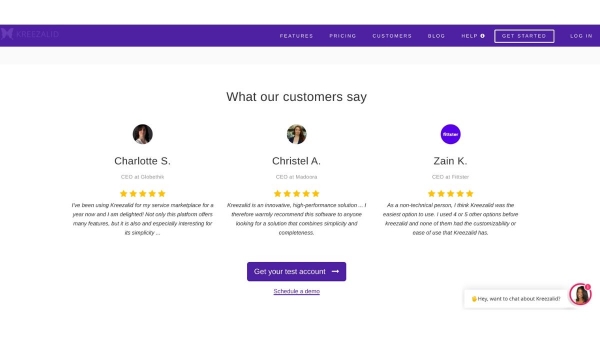Want to build a P2P marketplace? This guide shows you how.
Build your online marketplace today!
Benefit from a 7-day free trial, with no obligation or payment card
How do you build a successful Peer-to-Peer marketplace?
A P2P marketplace helps sellers or lessors connect with buyers or renters. This is a great business model. After all, a few of the best-known marketplaces include Etsy and Amazon.
And today, you learn how to turn your idea into a marketplace business.
Ready to learn more? Let’s go.

Source: Pexels
What is a Peer-to-Peer marketplace?
A Peer-to-Peer or P2P marketplace is an online platform that connects people who have a product or service and people who need that product or service. A product can exchange hands through rentals or purchases. Services are usually paid for.
Some prominent marketplaces (both P2P e-commerce platforms and P2P service platforms) include:
- Etsy
- Amazon
- Uber
- Postmates
- eBay
- Upwork
- TaskRabbit
- Airbnb
Another example is our own client, Beauté Fûtée, The way it works is that people can buy makeup at a more affordable rate. For example, a seller might have received a perfume as a gift but doesn’t want to use that perfume. She sells it for less than the retail price on Beauté Fûtée’s platform.

The reason people want to buy or rent from P2P marketplaces are:
- Convenience
- Price
- Choice
- Flexibility
- Community
And sellers want to sell on marketplaces to tap into a new stream of customers or to build their business entirely off of a marketplace website.
The first steps to a successful marketplace
What are the first steps you need to take to build a successful P2P marketplace?
First: Map out your business model.
Business model
Your P2P marketplace can be an ecommerce platform or a service platform. Your platform offers the possibility to buy, rent, or loan things. And you’re either serving a B2C (business-to-consumer) audience or a B2B (business-to-business marketplace) audience.
You will also need to decide your P2P revenue model. Your pricing strategy can either consist of commissions, fees, or a combination of these. Most marketplaces use commissioning, so they take a chunk of the transaction price, as well as some type of fee. For example, marketplaces like Airbnb and Etsy charge payment fees and static fees.
If your marketplace is based on loaning things (so no exchange of money happens on your platform), a great alternative is to use membership fees. For example, the housesitting website TrustedHouseSitters uses this model.

P2P marketplace idea
Your next task is to come up with a marketplace idea. Already have one? Great, you can move on to the next section.
If not, let’s talk it through.
You don't need a unique idea
First, contrary to what many think, most successful marketplaces aren’t the first of their kind. Take Amazon or Airbnb. There were other, similar websites before they came along. And today, there are successful marketplaces in the same industry, even if those marketplaces tend to be niched in one way or another.
For example, Etsy is, just like Amazon, a P2P ecommerce marketplace. The difference? Etsy offers handcrafted items, while Amazon does not.
You don’t need a unique idea, as long as your idea is niched. Your marketplace must improve the solutions that already exist out there and that’s usually easiest in a specific niche.
Where to find your idea
Second, where do you find an idea?
Good question.
The first starting point is to think about your own problems and challenges. Would a marketplace be the solution to any of those?
Also look at what your friends and family are struggling with and at existing, successful marketplaces.
Take these steps consistently and you WILL find your idea.
Why do marketplaces fail?
New marketplaces, just like other businesses, fail -- often. In fact, the US Small Business Administration estimates that around 20% of businesses fail within the first year and half of them fail within five years after having been founded.
The thing is:
There are circumstances you can’t control. But much more than that, your success comes down to if you’ve taken steps to ensure you have a viable and profitable business idea.
How do you ensure that your idea will stick?
Profitability
First, ensure that your idea is profitable. If you calculate an estimated average order price (based on whatever your products usually sell for), how many users will your platform need?
Make sure you know the numbers before you start building your marketplace.
Validating your idea
Second, even if an idea feels good, you will need to validate it. What does this mean? Get your potential users and customers to show you that they want and need your marketplace platform.
The best way to do this is to first interview people in your target market. You can find these people by posting on social media, such as in Facebook groups and on LinkedIn, and ask people to jump on a quick call with you.
During your interviews, you ask your target market to explain their challenges and goals so that you can figure out how to position your own marketplace.
Once you have an understanding of what it is your market needs, you can move on to creating an MVP or Minimum Viable Product. This is the first iteration of your marketplace. It shouldn’t be complicated, but instead, it should be a simple version of your marketplace.
When you have paying users who use your MVP and you’ve validated that your idea will work, you can move on to the next step:
Building and growing your Peer-to-Peer marketplace website.
How to create a Peer-to-Peer marketplace website
What’s the best way to set up your MVP and after that, your marketplace website?
You have a couple of options, which we’ll look at here below.
Custom-built marketplace website
Your first option is to custom-build your P2P marketplace website. If you build it from scratch, you can choose pretty much everything from design to features.
The problem? It’s costly. At team Kreezalid, we used to run a marketplace development agency. And the exact problem we went out to solve with Kreezalid is that marketplace website development comes with a huge price tag.
In fact, you will probably look at spending at least $20,000 for a basic website. And that’s before calculating in any changes you make or your MVP.
No-code marketplace
To help new marketplace entrepreneurs find a more cost-effective alternative, we founded Kreezalid.
With a tool like Kreezalid (there are others, too, like Sharetribe or Arcadier), you don’t need any technical skills to get started. You simply create an account and use our drag-and-drop tools to create a website in less than an hour.

Marketplace app
If you’re wondering how to build a marketplace app, you will probably need to look into custom-built solutions if you’re looking for an app like Uber. Also here, you will need an MVP before you create anything more advanced.
What should your P2P online marketplace platform include?
Wondering what your platform should include? Remember, you can easily add these on with a no-code marketplace solution. But when you’re just getting started and creating your MVP, you should opt to make your marketplace very simple and easy to use instead of including tons of features.
Listings
Listings are one of the basic features you need. So, the ability for sellers to list products or services and for buyers to search for those listings.
Accounts
The next feature are accounts. You need user details to enable things like reviews and for users to complete the transaction.
Payments
The ability to pay and get paid is important, even when you’re building your P2P MVP. After all, your goal is to ensure that your idea is financially viable.
Want to get started?
There you have it. Now you know how to take your Peer-to-Peer marketplace idea and turn it into a real business.
What it comes down to is that you decide on the type of P2P marketplace you want to build and validate that idea. You can then easily set up your marketplace platform with marketplace software.
Want to start building your P2P website?
Try Kreezalid for free for 14 days. One of our customers said about our marketplace website builder:
“Kreezalid is an excellent solution to create your marketplace fast and without coding. Easy to understand, we were able to create our marketplace in a few days! There are always new features, and the team is available to support you and answer your questions.”
Sign up to get started building your own marketplace.

